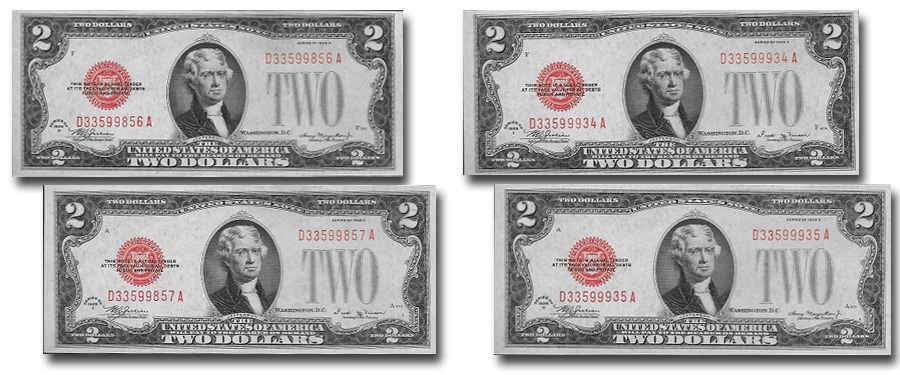
An interesting niche in paper money collecting is the "changeover pair." Within United States currency a changeover pair is two consecutively numbered notes where there is a change in series date, signature combination, mule plate, or other plate variety (ex. narrow or wide plate). This occurs most often on small size currency with series dates between 1928 and 1935.
During that time period printing plates were engraved with both the signatures and the series date. Because engraving the printing plates was so expensive and time consuming, plates were often utilized long after the officials whose signatures were on the plate left office. It was not unheard of for the BEP to use plates from different series or a slightly different plate type to print notes simultaneously. This means that on the same day, the BEP might have printed both Series 1928 D and 1928 E $2 Legal Tender Notes. Changeovers are known on numerous series, denominations, and types.
The changeover within consecutive runs occurred when printed sheets with differing series, signatures, plate varieties etc. were stacked interchangeably before the third printing added the serial numbers. As differing sheets came together and were subsequently numbered, changeover pairs were created. Reverse changeover pairs also exist where a sheet from a later series or variety was stacked above an earlier sheet before the numbering process.
Examples of changeover and reverse change over pairs are pictured. These pairs transition from Fr. 1505 1928 D $2 Legal Tender Note to Fr. 1506 1928 E $2 Legal Tender Note and then back again from Fr. 1506 1928 E $2 Legal Tender Note to Fr. 1505 1928 D $2 Legal Tender Note.





